This article was medically reviewed by Carmen W. Landrau, MD. Dr. Landrau is a board certified Cardiologist at Memorial Hermann Hospital in Texas and a public speaker on heart health. She completed her fellowship in Cardiology at the University of Texas Medical Center in Houston in 2009. Her work has been featured by the American Heart Association, St. Jude Medical, and Univision.
There are 19 references cited in this article, which can be found at the bottom of the page.
wikiHow marks an article as reader-approved once it receives enough positive feedback. In this case, 92% of readers who voted found the article helpful, earning it our reader-approved status.
This article has been viewed 31,604 times.
A cardiologist is a doctor who specializes in caring for the cardiovascular system, namely, the heart and blood vessels.[1] Becoming a cardiologist is not a simple task, and requires you to be committed and disciplined. If you want to become a cardiologist, you can start during your high school years. Beyond that, you’ll need to earn an undergraduate degree, attend medical school, earn a place in an internal medicine residency, and finally, complete a cardiology fellowship. During this time, you will also need to successfully complete many examinations.
Steps
Getting into Medical School
-
1Look into potential medical schools. You may already know exactly where you want to go to medical school, but if you don’t, you should start looking at the possibilities as soon as possible. This will be very similar to your experience searching for an undergraduate program. Don’t just pick the top medical school in the country for that reason. Instead, search for a school that will be a good fit for your long-term goals, financial limitations, and personality.[2]
- There are many factors to consider. For example, some medical schools focus mostly on research while others focus on patient care. Some focus on a specific specialty and many don’t. Medical schools even vary on levels of competitiveness. For example, Johns Hopkins is famous for being cutthroat, but other universities might offer a more collaborative atmosphere.
- Don’t forget to consider things like location, weather, and student life. Though these may not be the top things to consider, they are still important. For example, if you cannot stand long, cold winters, a school in the Northeastern United States may not be the optimal experience for you.
-
2Take the Medical College Admissions Test (MCAT). The MCAT is a written, multiple-choice examination. It looks at your ability to think critically and problem-solve, and tests your knowledge of the natural, behavioral, and social sciences. The exam usually takes about eight hours to complete. Most undergraduate students take this exam during their sophomore or junior year of college.
- There is a nearly limitless amount of study material available for the MCAT. See what materials and courses are available through your university, or visit the Association of American Medical Colleges (AAMC) website to view and purchase study materials: https://www.aamc.org/.
Advertisement -
3Apply to Medical School. Once you’ve made a list of all of the medical schools you believe to be a good fit, you’ll need to start the application process. If you are applying to a lot of medical schools it is important to stay organized. Take note of applications deadlines and any applications fees that must be paid.[3]
- You could consider creating a folder for each medical school you want to apply to. On the front of each folder, write down the name of the school, the date the application is due, and a checklist of each document that is to be submitted as part of the application, as well as the address or website where you must submit the application.
- You will need letters of recommendation as part of each application. Don’t put off asking for these. Be sure to take note of whether the medical school has a template for the recommendation letters and how they are to be submitted. Make this clear to the people you will be asking.
- Many medical schools use American Medical School Application Service (AMCAS) and others use the American Association of Colleges of Osteopathic Medicine Application Service (AACOMAS). This is nice because these application services do some of the work for you, but they do require a $160 fee that includes one medical school. Each additional medical school you wish to apply for costs $38.
Being Successful in Medical School
-
1Maintain a good relationship with professors. Your professors will play an important role in your medical school experience, and will also be important for landing a position in a good residency program. This is because they are often the ones responsible for writing letters of recommendation. Put your best foot forward in medical school so that your letters of recommendation will be favorable.[4]
- These professors will also act as mentors, and the relationship you have with them largely depends on how you use that relationship. If you don’t take an interest in building a professional relationship with your professors, then they won’t either.
- You will be continually challenged in medical school. This is because professors want to see who is cut out to become a doctor and who isn’t. You will need to study the information you are learning very hard so that you can put that knowledge to use without supervision.
-
2Prepare for the first step of your licensure examinations. During your first two years of medical school, you will be required to take the first of three steps towards becoming licensed. There are two different types of licensure examinations offered in the United States: the United States Medical Licensing Examination (USMLE) and the Comprehensive Osteopathic Medical Licensing Examination (COMLEX). The USMLE is required for licensure for medical students attending medical schools that confer a Doctor of Medicine (M.D.) degree but may also be taken by medical students attending medical schools that offer a Doctor of Osteopathic Medicine (D.O.) degree. The COMLEX is required for licensure of DO medical students. Both examinations are taken in three stages (known as levels or steps). The first stage of each series of exams is very rigorous and includes 8-9 hours of testing on about 300 questions. This test examines your basic understanding of science and how it is applied to practicing medicine.[5]
- It is important that you study extensively for this examination. Be sure to take full advantage of any study materials available to you. You can find practice materials for each step of the examination process on the USMLE and COMLEX websites: http://www.usmle.org/.
- You must pass these exams in order to move on in medical school and eventually to receive a license to practice medicine.
-
3Look for rotations in cardiology. In your third and fourth year of medical school, you will likely move your education to the hospital. In the third year, you probably won’t get much say in the rotations as all medical students are required to spend time working in each of the fundamental specialties; however, in your final year, you may get to speak up about what you’re interested in. This is when you should try to focus on cardiology as much as possible.
- Don’t forget that you will be required to write an essay for your residency application. During your rotations, try to keep a journal of your experiences and interactions with patients. You can then use this journal to write a great essay about why you would make a good resident in their program.
-
4Prepare for the second step of your licensure examinations. In your final year of medical school, you will complete the second of the three steps for licensure. The second step of the USMLE and COMLEX examinations are separated into two parts. The first of which tests your clinical skills (Step 2 CK for USMLE and Level 2 CE for COMLEX) through a written examination.[6] The second part (Step 2 CS for USMLE and Level 2 PE for COMLEX) is an exam that looks at your ability to work with patients.[7]
- Step two of the examination is administered over a two-day period.
- As with step one, you will need to prepare yourself for this examination extensively. Visit the USMLE and COMLEX websites for practice materials.
-
5Get involved in all your school has to offer. Medical school is a very challenging time in the life of a student, and you may think that you should spend all of your time studying; however, getting involved in extracurricular activities and continuing to volunteer in the limited spare time you have will continue to build your CV, and will also provide a network of mentors, friends, and peers that can provide academic and emotional support during this time.[8]
- Don’t underestimate the importance of social support during medical school. Your friends, family, mentors, and peers will be vital for this. This also means that you should do your best to find the time to be something other than a medical student. For example, don’t feel bad going out to have coffee with friends sometimes.
-
6Complete an internal medicine residency. In order to become a cardiologist, you’ll need to complete a three-year residency in internal medicine. Interviews for residency positions usually occur during December to February of your final year of medical school. The day when residency positions are announced is commonly known as “Match Day” and occurs in March of your final year of medical school.
- You will need to apply to residency programs around the country/world, much like you did for your undergraduate and medical programs.
-
7Take the last step of USMLE and/or COMLEX. The final test for licensure is usually taken at some point during the residency. The final step is a two-day exam. The first day involves a written, multiple-choice exam consisting of ~250-300 questions that test your knowledge of basic medicine. The second day involves observing your assessment skills.[9]
- The first day of examination usually takes about seven hours.
- The second day of examination usually takes around nine hours.
- COMLEX Level 3 is taken in a single day
-
8Complete a cardiology fellowship. Like the residency, the fellowship is typically also three years. During this time, you’ll likely split your work between seeing patients and learning from experienced cardiologists, and doing research.[10]
- Once you have completed your cardiology fellowship, you will be able to become certified by the American Board of Medical Specialities (ABMS) and/or the American Osteopathic Association (AOA) as a cardiologist.
-
9Choose a specialty. During your cardiology fellowship, you’ll have the chance to choose your specialty. There are several specialties that you can choose from, including: non-invasive cardiology, invasive, non-interventional cardiology, interventional cardiology, and electrophysiology.[11]
- Be sure to understand that a cardiologist is not a surgical field. If you want to become a cardiac surgeon you will need to pursue a surgical specialty instead of a cardiac specialty.
- Pediatric cardiology is also a tract separate from cardiology, requiring three years pediatrics residency and three years pediatric cardiology fellowship. If you wish to be a pediatric cardiologist, you must pursue a pediatric specialty.
Understanding Job Opportunities
-
1Be aware of the types of employment available for a cardiologist. A cardiologist has a wide variety of choices when it comes to employment settings. For example, you could be employed by a government agency, a hospital, or a research lab. You could also be employed by a private practice, or you could even open up your own if you wanted to.[12]
- Opening up your own medical practice is a big commitment, and may be especially challenging if you don’t have a lot of experience working as a cardiologist. Many cardiologists work in a hospital or a practice owned by another doctor to gain some experience before venturing out on their own.
-
2Know the average salaries. Cardiologists are typically very well-paid, but it is important to understand that the amount you are paid for your work depends on a range of factors. If you work in a big city, you will probably get paid significantly more than if you live in a small town in the middle of nowhere. Keep in mind, though, that this is also due to cost-of-living factors. It will probably be tremendously expensive to buy a nice home in the middle of a big city (or even in the suburbs), but you will probably be able to afford your dream home in a smaller town on your salary.[13]
- There may also be significantly more competition in a cosmopolitan city that everyone wants to live in. It’s all about comparing the advantages and disadvantages of different job opportunities.
- The median salary in 2014 for the lowest paying cardiology specialty was over $245,000 and the median salaries only increased from there.
-
3Understand the day-to-day duties of a cardiologist. Because of the prominence of heart disease in developed countries, a job in cardiology can be a busy one. On a day-to-day basis you can expect to: diagnosing heart problems, prescribing medication, conducting medical procedures related to the heart, and giving health advice to patients.[14]
- Day-to-day duties can vary widely depending on the type of job you hold. For example, if you take a job that focuses on research you might not see patients at all.
-
4Consider becoming a member of the American Heart Association (AHA). Becoming a member of this association is a good idea because it helps you network with other professionals in the field, gives you access to continuing education, and will help you stay informed about new developments in the field of cardiology.[15]
- You can even join the AHA while you are still a student. Memberships range in price from $78.00 up to $455.00 per year depending on the level of membership and the benefits included.[16]
-
5Look into joining the American College of Cardiology (ACC). The ACC is another respected organization that you might want to consider becoming a part of. As a member, you will be connected with thousands of other professionals in the field, and you will be given access to relevant medical journals, which can be very valuable.[17]
- The initial cost to join the ACC is a little over $900, but the cost to maintain your membership is only around $150 per year.[18]
- Note that to become a member of the ACC you will need to prove your qualifications and provide letters of recommendation.
Getting Started Early
-
1Take classes in the sciences during high school. In high school, you may not have much choice in what classes you take, but where you do have a choice, try to aim high. If your class offers AP or Honors courses, take them, especially if they are in science courses such as biology and chemistry.[19]
- If your high school doesn’t offer advanced science courses, look for any advanced courses they may have. For example, courses in literature, history, or economics. AP/Honors courses may help you earn college credit, which looks great to prospective universities.
- Take as many courses in math and sciences as you can. You want to have a strong foundation in these subjects before entering university, if possible.
-
2Earn good grades. You may think your grades aren’t that big of a deal in high school, but this couldn’t be further from the truth. If you want to become a cardiologist, you will need to think about long-term consequences of your decisions, which starts with earning good grades in high school. Developing discipline when it comes to studying and doing well in academics will help prepare you for what is to come in your undergraduate classes and medical school[20]
- If you are struggling in a course, take steps to find a tutor, or go to the teacher after class to ask questions and get help. Most teachers will be happy to spend extra time helping you if they can see that you are taking the work seriously.
-
3Look into universities that interest you. It is never too early to start thinking about where you would like to complete your education after high school. You’re going to need to complete an undergraduate degree and go to medical school. Start thinking about your long-term plans. If there is a particular medical school you’ve always dreamed of going to, look into their undergraduate programs. Make a list of things that are important to you in a university, and go from there.
- If you’re not sure where you’d like to go to university, then you can take a more practical approach. Think about how far you’re willing to travel for your education. In the United States, it is more affordable for most students to stay in the same state that they hold residency.
- Most of the Ivy League schools have great pre-medical programs, but these universities are extremely competitive (not to mention extremely expensive). You can certainly apply to these programs but consider other universities as well.
- While a huge university might have more resources and prestige, consider the fact that professors won’t be as accessible. You may spend four years with a professor without ever getting a chance to speak with them one-on-one. On the other hand, a smaller university may not have access to the latest educational technology, or access to top internships, but you will get to know your professors much more easily.
-
4Take required entrance examinations. Once you have a list of schools you are interested in applying to, you can look into the entrance requirements for these universities. Almost all universities will require you to take the Scholastic Aptitude Test (SAT) and many others will require that you take the ACT as well. Doing well on these exams can make the difference between getting into your top choice or not getting into any of your top schools so it is important to take these very seriously.[21]
- There are many options when it comes to preparing for these tests. You can attend preparation courses for both the SAT and the ACT, but these tend to be expensive. You can also study on your own using one of the many study guides available. Be sure to check your high school library for these study guides before purchasing.
-
5Apply to your chosen universities. If you are still in high school, you should do this well before you graduate. If you have already finished high school, you can apply as soon as you have all of your application materials ready and the application period is open for your prospective universities.[22]
- If you are planning to apply to several universities it is a good idea to begin preparing your materials well in advance. Make a list of required application materials for each university you want to apply to. Make note of deadlines and application fees as well.
- Remember that universities are looking for more than grades. Think of everything you have done that will be impressive to a university. This includes volunteer experiences as well as extracurricular activities.
- If you are still in high school, start work on your applications in the summer before your senior year begins.
-
6Don’t assume you must be a pre-med major. Many students believe that, in order to get into a good medical school, you must be a pre-med major or a biology major. This is not true. More and more, medical schools are looking for students with well-rounded liberal arts education. This means that, in some cases, you could actually major in English and still get into a good medical school.[23]
- If you do major in pre-medicine or biology, consider rounding out your education by taking classes in a variety of subjects. This will give you the best of both worlds by preparing you for what is to come in medical school, while also demonstrating that you’ve gained knowledge in a variety of subjects.
-
7Volunteer. Volunteering is a good idea for many reasons. It gives you a chance to see what it’s really like to be a cardiologist, which can help you figure out if this is really what you want. Volunteering looks great on a CV, and it will give you experience in the field, which is valuable for many reasons. Try volunteering at a local cardiologist’s office, or any kind of medical clinic where you can gain experience.[24]
- Even if you can’t find a volunteer opportunity in something related to medicine or cardiology, you can still volunteer. Look for volunteer opportunities that help people in need. For example, you can volunteer with Habitat for Humanity or at a local soup kitchen.
- If a university or medical school must choose between two academically impressive students, they will likely choose the student with volunteer experience.
- Some programs, such as Gap Medics, offer pre-medical students an opportunity to shadow doctors abroad, but you must be at least 16 years old.
Warnings
- Embarking upon a career in the medical field is ambitious and rewarding, but it can also be very challenging, stressful, and expensive. Make sure you are up to the challenge before making a commitment to this field, as it may have a significant impact on your social and financial life.⧼thumbs_response⧽
References
- ↑ https://www.cardiosmart.org/Heart-Basics/What-is-a-Cardiologist
- ↑ http://www.princetonreview.com/med-school-advice/how-to-choose-a-medical-school
- ↑ https://students-residents.aamc.org/applying-medical-school/article/applying-medical-school/
- ↑ http://www.studentdoctor.net/2014/02/the-seven-habits-of-highly-successful-medical-students/
- ↑ http://www.usmle.org/step-1/
- ↑ http://www.usmle.org/step-2-ck/
- ↑ http://www.usmle.org/step-2-ck/
- ↑ http://www.studentdoctor.net/2014/02/the-seven-habits-of-highly-successful-medical-students/
- ↑ http://www.usmle.org/step-3/
- ↑ http://learn.org/articles/Cardiology_Become_a_Cardiologist_in_5_Steps.html
- ↑ http://www.gapmedics.com/blog/2014/03/07/how-to-become-a-cardiologist/
- ↑ http://www.gapmedics.com/blog/2014/03/07/how-to-become-a-cardiologist/
- ↑ http://learn.org/articles/Cardiologist_Job_Duties_Occupational_Outlook_and_Education_Prerequisites.html
- ↑ http://www.gapmedics.com/blog/2014/03/07/how-to-become-a-cardiologist/
- ↑ http://doctorly.org/how-to-become-a-cardiologist/
- ↑ https://professional.heart.org/en/partners
- ↑ http://doctorly.org/how-to-become-a-cardiologist/
- ↑ http://www.acc.org/membership/become-a-member/cardiovascular-physician-clinical-practice-practicing-in-the-us-or-canada
- ↑ http://www.gapmedics.com/blog/2014/08/15/it-s-not-too-early-preparing-for-med-school-in-high-school/
- ↑ http://www.huffingtonpost.com/marjorie-hansen-shaevitz/so-you-want-to-go-to-medi_b_5347725.html
- ↑ http://www.businessinsider.com/why-colleges-place-so-much-importance-on-the-sat-2014-10?IR=T
- ↑ https://bigfuture.collegeboard.org/get-in/applying-101/applying-to-college-faq
- ↑ http://www.huffingtonpost.com/marjorie-hansen-shaevitz/so-you-want-to-go-to-medi_b_5347725.html
- ↑ https://www.scholarships.com/resources/public-service-and-volunteering/benefits-of-volunteerism-in-high-school/
- ↑ http://learn.org/articles/What_Are_the_Best_Cardiology_Schools.html
About This Article
To become a cardiologist, focus on taking science classes, like biology and chemistry, if you're still in school since they'll help prepare you for medical school. You should also plan on getting an undergraduate degree if you don't already have one since you'll need it to get into medical school and become a cardiologist. In the meantime, focus on doing good in school, and consider volunteering at a clinic or doctor's office to gain first-hand experience in the medical field. For more advice from our Medical co-author, like how to apply to medical school, read on!


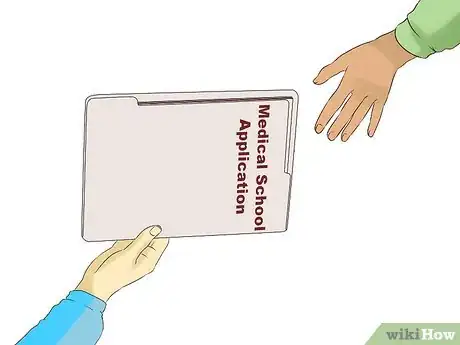

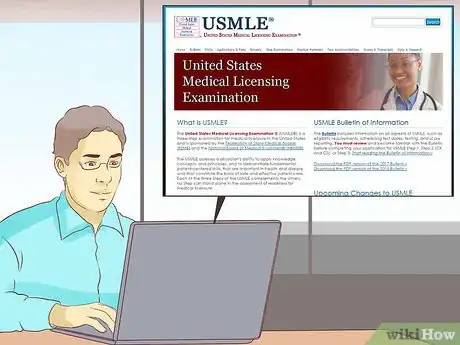
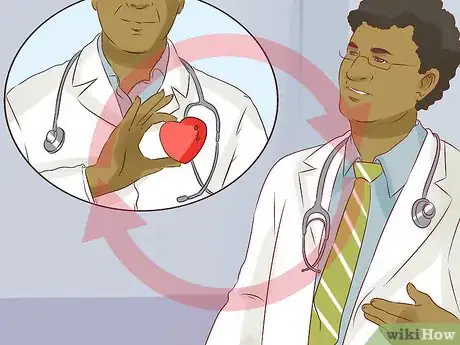


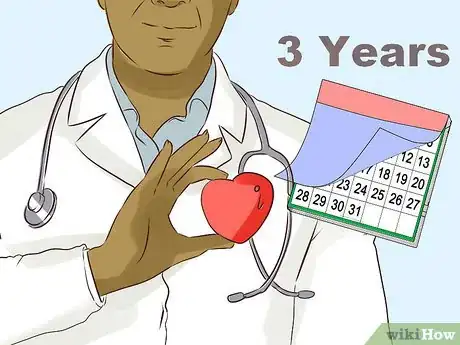

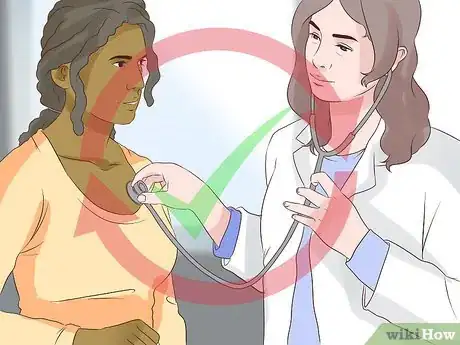
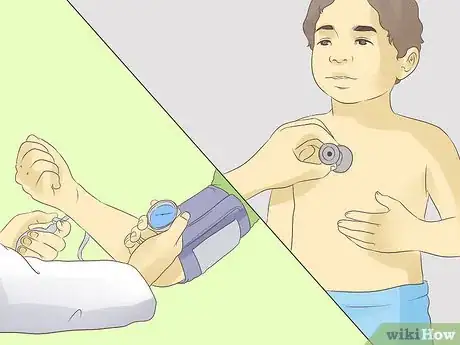


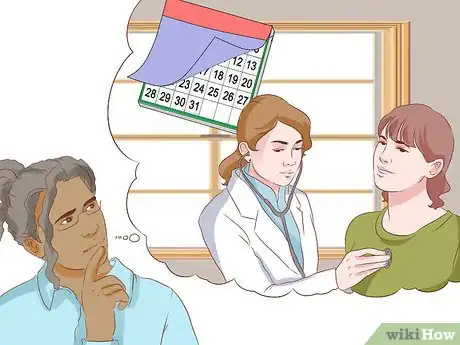
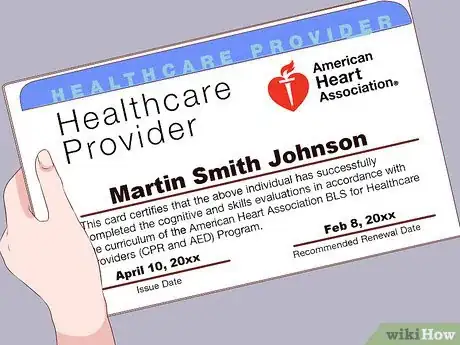
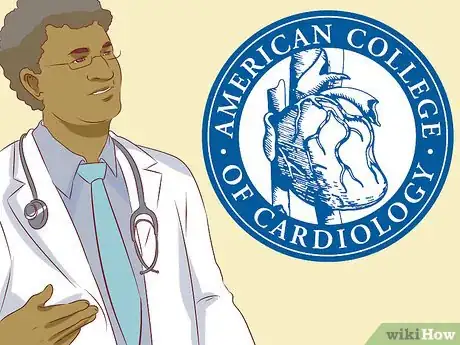





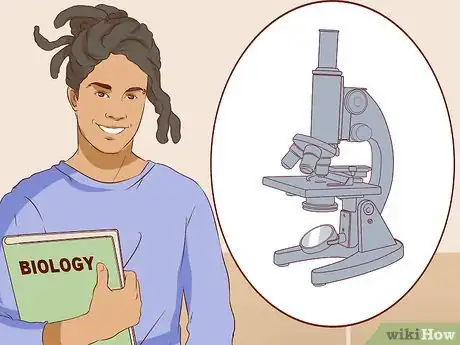

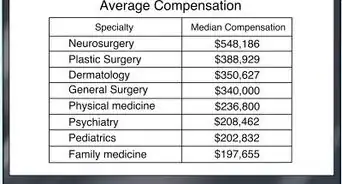





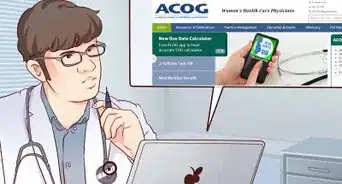




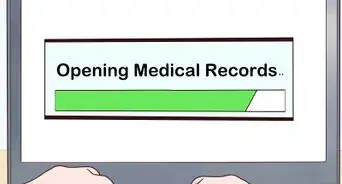











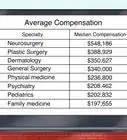


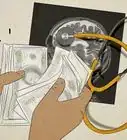



































Medical Disclaimer
The content of this article is not intended to be a substitute for professional medical advice, examination, diagnosis, or treatment. You should always contact your doctor or other qualified healthcare professional before starting, changing, or stopping any kind of health treatment.
Read More...